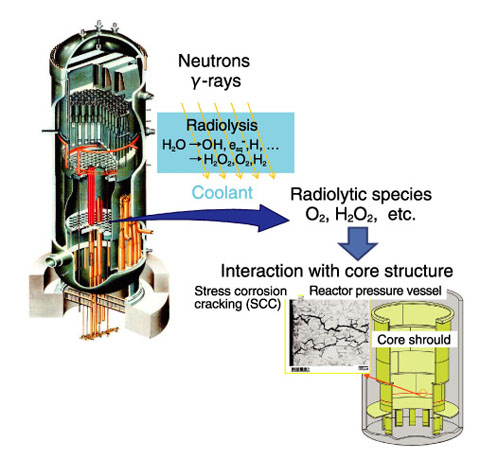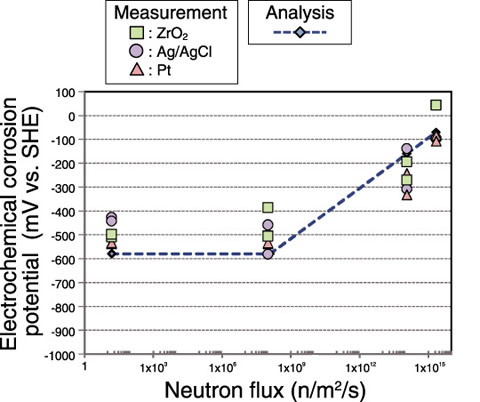
Fig.5-6 Water radiolysis and corrosion in a reactor core

Fig.5-7 Comparison between calculated and measured values of ECP
Light-water reactors (LWRs) use high-purity water as the primary coolant and the neutron moderator. As a result of water radiolysis, oxidizing species such as oxygen and hydrogen peroxide are generated in the water. The generated oxidizing species interact with structural materials, causing material degradation such as stress-corrosion cracking (SCC). It is therefore important to accurately evaluate water chemistry in the reactor core for ensuring long-term safe operation of LWRs (Fig.5-6). Water chemistry in the reactor core can be estimated through a combination of theoretical analyses and in-situ electrochemical corrosion potential (ECP) measurement, supporting the validity of the theoretical analyses by ECP measurement. One drawback of this process is that the number of locations for ECP measurement is limited in LWRs. For ensuring the accuracy of the theoretical analyses, theoretical model validation based on in-pile ECP measurement under a wide range of irradiation conditions is required.
In this study, ECP data obtained from an in-pile loop of an experimental reactor under mixed neutron and γ-ray irradiation were evaluated by theoretical analyses. The in-pile ECP data were obtained under a wide range of neutron flux levels (from quite low to high), which is equivalent to the range of neutron flux levels in the core shrouds of LWRs. The ECP measurement data are plotted as a function of neutron flux in Fig.5-7. In this case, hydrogen was injected in the water to reduce the concentration of the oxidizing species that has a strong relation with the ECP, i.e., the ECP decreases with a decrease in the concentration of the oxidizing species. As can be seen in the figure, the ECP for low values of the neutron flux was low because of the effect of hydrogen injection. However, the measured ECP increased with an increase in the neutron flux because the generation of oxidants due to irradiation exceeded the suppression effect due to hydrogen injection. The calculated ECP values agreed well with the measured values, showing that the theoretical model is applicable to a wide range of irradiation conditions with sufficient accuracy.
This theoretical model will be extended to evaluate the corrosion environment under sea water and γ-ray irradiation for developing countermeasures against the corrosion of the containment systems of Fukushima Daiichi NPS.